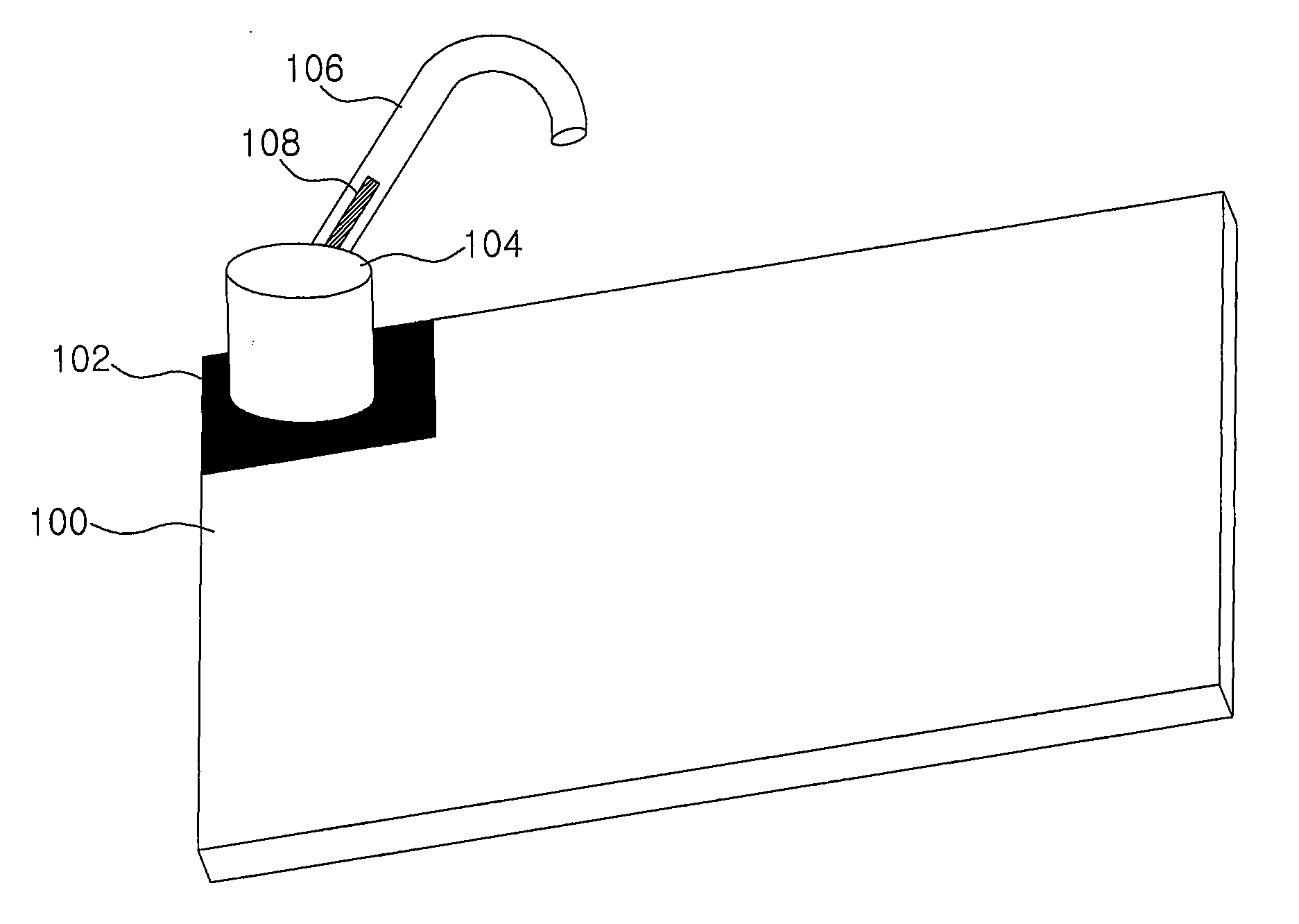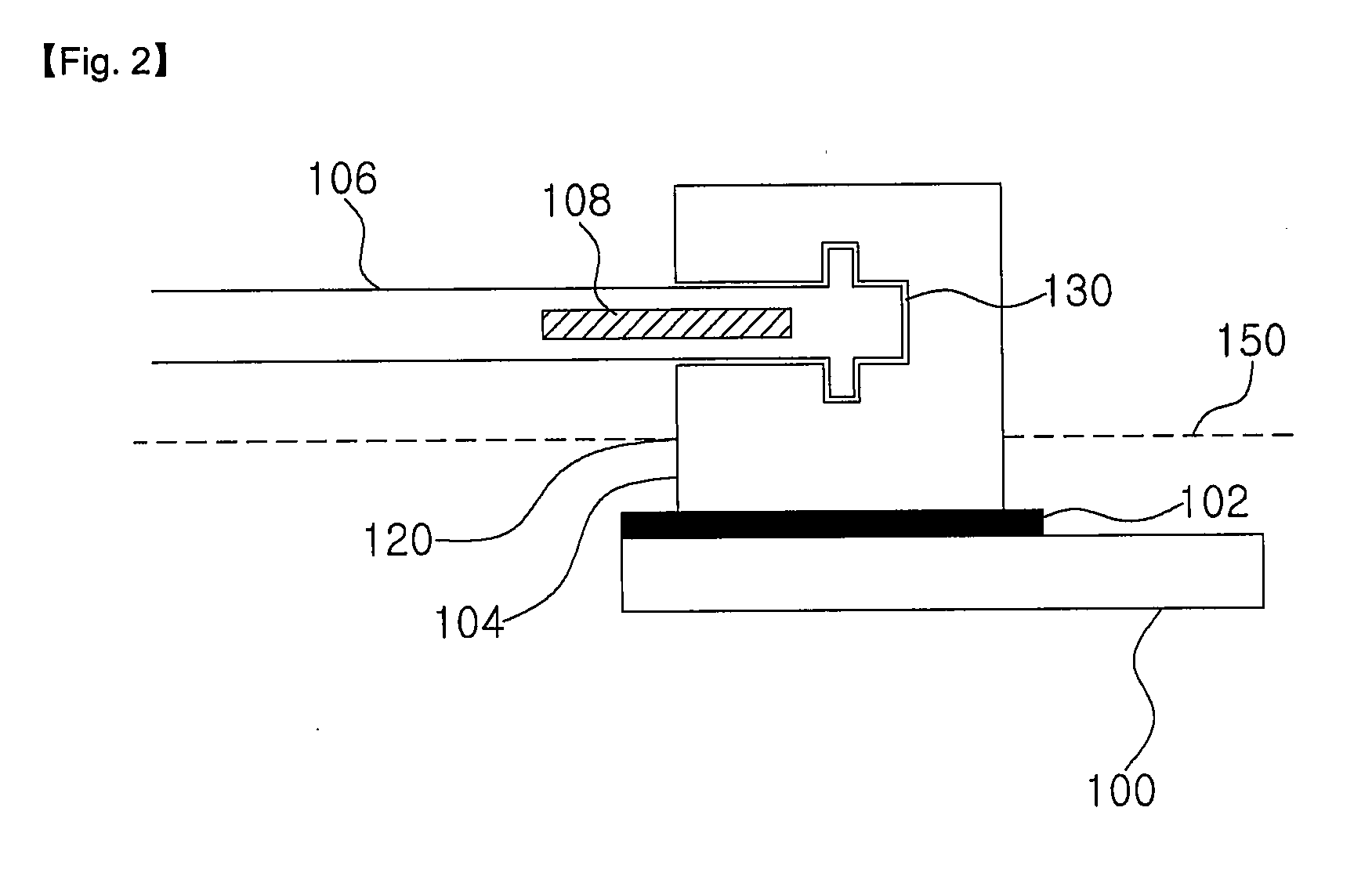Built-in antenna for headset
a headset and antenna technology, applied in the field of antennas, can solve the problems of low efficiency of chip antennas, abrupt change of sound quality of audio signals, and inability to meet demand, and achieve the effect of less affected and high efficiency
- Summary
- Abstract
- Description
- Claims
- Application Information
AI Technical Summary
Benefits of technology
Problems solved by technology
Method used
Image
Examples
second embodiment
[0053]In the embodiment illustrated in FIGS. 1 and 2, the connecting part 104 rotates while keeping electrical contact with the feeding pattern 102. Here, the electrical contact with the feeding pattern 102 may be destabilized by the rotation of the connecting part. The second embodiment illustrated in FIGS. 3 and 4 is an embodiment that improves on such instability of the electrical contact.
[0054]In FIGS. 3 and 4, the cylindrical feeding part 204 is electrically joined with the feeding pattern 102. The feeding part 204 is made of a metallic material. The feeding part 204 is set fixedly, not to rotate, and maintains electrical contact with the feeding pattern 202.
[0055]The rotational shaft 208 protrudes out of the upper part of the feeding part 204, to be mechanically joined with the connecting part 206.
[0056]As described above, the connecting part 206 is joined with the rotational shaft 208 at a particular distance away from the feeding part 204, and rotates if an external force is...
first embodiment
[0058]As in the first embodiment, the connecting part 206 has a joining groove 230 for joining the hooking part 210 to it, and the hooking part 210 is mechanically joined with the connecting part 206 by way of the joining groove 230. As described above, the hooking part 210 may be joined with the connecting part by a variety of joining methods, besides the joining groove method.
[0059]The radiator is inserted into the hooking part 210, and as described above, the radiator 212 may be inserted into the hooking part 210 by way of insert molding, for example.
[0060]The radiator, as in the first embodiment, may preferably be inserted in the area where the hooking part 210 and the connecting part 208 are joined.
[0061]Feeding from the connecting part 208 to the radiator 212 is done by a second coupling, and the radiator 212 radiates the RF signals fed or receives the RF signals transmitted from the outside.
PUM
 Login to View More
Login to View More Abstract
Description
Claims
Application Information
 Login to View More
Login to View More - R&D
- Intellectual Property
- Life Sciences
- Materials
- Tech Scout
- Unparalleled Data Quality
- Higher Quality Content
- 60% Fewer Hallucinations
Browse by: Latest US Patents, China's latest patents, Technical Efficacy Thesaurus, Application Domain, Technology Topic, Popular Technical Reports.
© 2025 PatSnap. All rights reserved.Legal|Privacy policy|Modern Slavery Act Transparency Statement|Sitemap|About US| Contact US: help@patsnap.com



